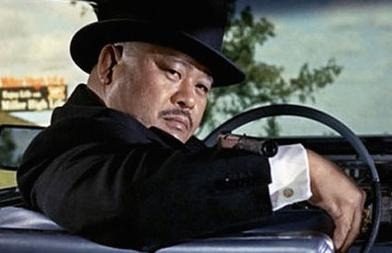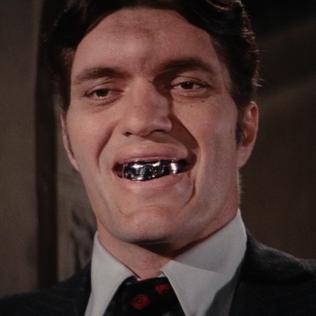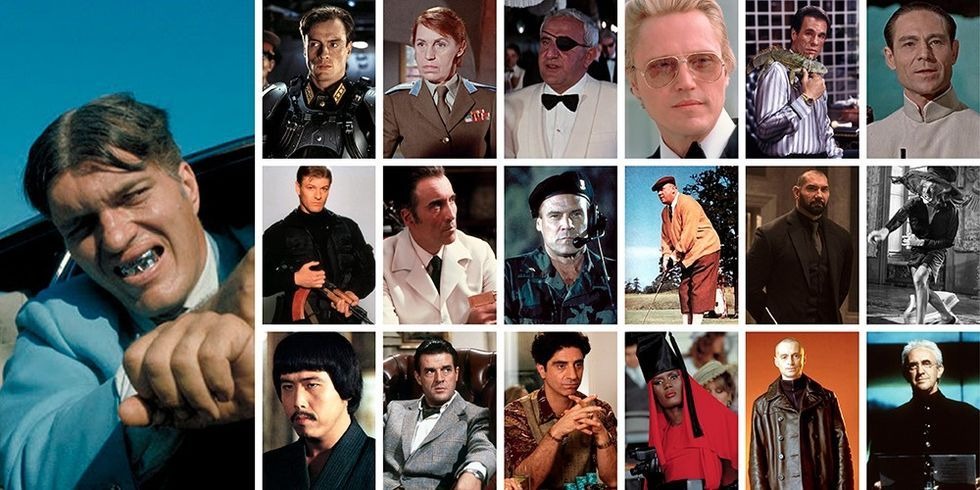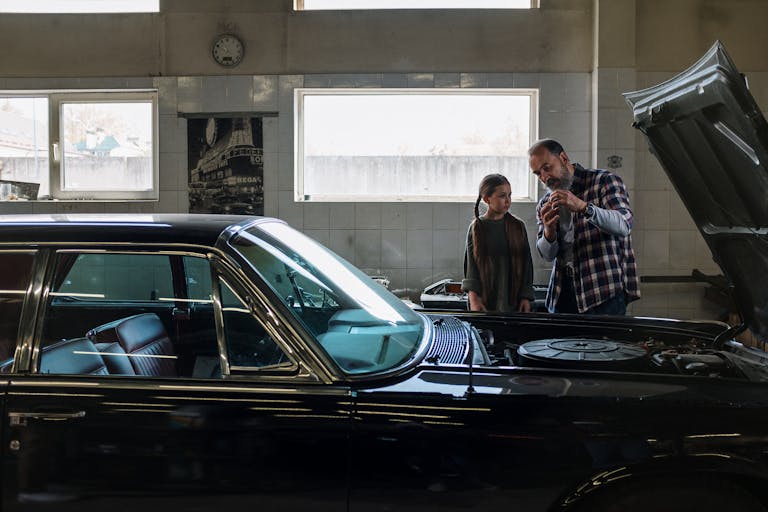Introduction
James Bond, the smooth spy with a license to kill, has thrilled folks for decades. From the pages of Ian Fleming’s books to the big screen, the 007 series is packed with action, gadgets, and romance. But what really makes these stories pop? It’s the bad guys—the 007 baddies. These villains aren’t just obstacles for Bond; they’re the heart of the drama, pushing him to his limits and making the tales unforgettable.
Think about it: without a strong enemy, Bond’s adventures would fall flat. The baddies bring the tension, the clever plots, and those jaw-dropping showdowns. They’ve got wild plans, like blowing up the world or stealing fortunes, and they come with quirky traits that stick in your mind. From the cold-hearted masterminds to the muscle-bound henchmen, these characters mirror real-world fears, like war or greed, while adding a dash of over-the-top fun.
The Bond franchise started in the 1950s with Fleming’s novels, where villains were often tied into Cold War spies and global threats. When the movies kicked off in 1962 with Dr. No, the baddies got even bigger, with actors bringing them to life in ways that shaped pop culture. They’ve influenced everything from spy thrillers to cartoons, turning phrases like No, Mr. Bond, I expect you to die into classics.
This article dives into these foes, looking at their history, what makes them tick, and why they matter. We’ll spotlight the stars, like Blofeld and Goldfinger, and see how they’ve changed over time. In a world full of heroes, it’s the villains who often steal the show, reminding us that good stories need great opposites. Bond’s world wouldn’t be the same without them—they’re the spice that keeps us coming back for more.
Historical Context of 007 Baddies
The roots of James Bond’s villains go back to Ian Fleming’s novels in the 1950s. Fleming, a former naval intelligence officer, drew from real spies and global tensions to craft his bad guys. Early ones like Le Chiffre in Casino Royale (1953) were tied to Soviet agents and gambling rings, reflecting Cold War paranoia. These foes weren’t just evil; they represented bigger threats, like communism or organized crime, making Bond’s fights feel urgent.
As the books rolled on, villains evolved. In Goldfinger (1959), Auric Goldfinger was a greedy smuggler obsessed with gold, hinting at economic fears. Fleming’s baddies often had foreign origins, like the Korean Oddjob or the Italian Emilio Largo, playing on post-WWII suspicions. But they also had personal grudges, adding depth beyond politics.
When the films started with Dr. No (1962), the villains got a makeover for the screen. Dr. No, played by Joseph Wiseman, became a half-German, half-Chinese mad scientist with metal hands—more visually striking than the book’s version. The movies amped up the spectacle, turning book threats into cinematic icons. During the Sean Connery era, foes like Blofeld led SPECTRE, a shadowy group echoing real terror networks.
By the 1970s with Roger Moore, villains shifted to reflect new worries, like energy crises in The Man with the Golden Gun (1974). The 1980s brought tech-savvy bad guys, mirroring the rise of computers. In the Daniel Craig films, starting with Casino Royale (2006), antagonists like Raoul Silva in Skyfall (2012) dealt with cyber threats and personal betrayals, feeling more modern and grounded.
Real events shaped these changes—Cold War spies gave way to terrorists post-9/11. Fleming’s originals were subtler, often with psychological layers, while films made them larger-than-life for box office appeal. This evolution keeps the baddies fresh, blending old fears with new ones, ensuring Bond’s world stays relevant.
Characteristics of 007 Baddies
Bond’s villains are a wild bunch, each with traits that make them stand out. They’re not your everyday crooks; they’re over-the-top, with big egos and bigger plans. This section breaks down what makes them tick, from their types to their drives.
Archetypes and Tropes
The megalomaniac mastermind is a classic, like Ernst Stavro Blofeld, who runs SPECTRE and dreams of world control. These guys are smart, pulling strings from hidden lairs, always one step ahead until Bond crashes the party. Then there are the henchmen, the muscle like Jaws with his steel teeth—tough, silent types who do the dirty work.
Femme fatales add spice, women like Xenia Onatopp in GoldenEye (1995), who use charm and strength to trap Bond. They’re deadly and seductive, blurring lines between ally and enemy. These archetypes draw from spy tales but get a Bond twist, making them memorable.
Tropes include hidden bases, like volcanoes or underwater cities, and elaborate death traps. Villains love monologuing, explaining plans before trying to kill Bond, giving him escape time. This builds suspense and humor.
In books, archetypes were more grounded; films exaggerated them for fun. Red Grant in From Russia with Love (1963) is a cold killer, while movie versions add flair. These patterns keep stories familiar yet exciting.
Common Traits
007 baddies share quirks that make them iconic. Many have physical oddities—scars, eye patches, or metal parts—like Dr. No’s robotic hands or Blofeld’s facial scar. These marks symbolize their twisted souls, setting them apart from normal folks.
They’re often charismatic, with smooth talk and style. Goldfinger’s gold obsession shows eccentricity, while Scaramanga’s third nipple adds weirdness. Weapons are unique too—Oddjob’s hat or Jaws’ bite.
Presence matters; actors like Christopher Walken as Max Zorin bring menace with a smile. They’re smart, outwitting governments, but arrogant, underestimating Bond.
In newer films, traits are psychological, like Silva’s betrayal scars. Early ones were stereotypical, but modern baddies have backstories, making them relatable yet evil.
Motivations
What drives these villains? Power tops the list—Blofeld wants global rule, Stromberg a new underwater world. Wealth follows, like Goldfinger’s Fort Knox heist or Drax’s space riches.
Revenge fuels some, like Silva hacking MI6 for past wrongs. Ideology pops up—eco-terrorists or anti-West fanatics.
Personal beefs with Bond or MI6 add heat, like Elektra King’s family ties. Books tied motives to Cold War, films to current events.
These drives make baddies human, not cartoonish, raising stakes for Bond.
Cultural Representation
Bond villains reflect diverse backgrounds, from European tycoons to Asian warlords, but often lean on stereotypes. Early films portrayed non-Western foes as exotic threats, like Dr. No’s mixed heritage.
Critics note racial biases—villains from other places symbolize foreign dangers. Gender roles too; women villains are seductive but punished.
Yet, diversity adds flavor, with actors like Yaphet Kotto as Mr. Big bringing variety. Modern films tone down stereotypes, focusing on universal threats.
This mix sparks debate on representation, but it shows how Bond mirrors society’s views.
Iconic 007 Baddies and Their Impact
Some villains stand tall in Bond lore, their schemes and styles etched in memory. This looks at the standouts and their lasting mark.
Notable Villains
Ernst Stavro Blofeld is the kingpin, appearing in multiple films as SPECTRE’s head. Played by Donald Pleasence, Telly Savalas, and Christoph Waltz, he’s calm, cat-loving, and ruthless. His plans range from satellite hijacks to personal vendettas, making him Bond’s arch-foe.
Auric Goldfinger, from the 1964 film, obsesses over gold, plotting to nuke Fort Knox. Gert Fröbe’s portrayal is smug and clever, with lines like No, Mr. Bond… becoming legendary.
Francisco Scaramanga, the golden-gun assassin in 1974, matches Bond’s skills, played by Christopher Lee with deadly charm.
Le Chiffre in Casino Royale (2006), Mads Mikkelsen’s poker-playing financier, brings gritty realism, torturing Bond in a raw scene.
These villains drive epic tales, their smarts clashing with Bond’s grit.
Memorable Henchmen

Oddjob, the silent henchman with his deadly hat from Goldfinger.
Oddjob, Goldfinger’s bodyguard, is silent but lethal with his razor hat, played by Harold Sakata. His strength and loyalty make him a fan favorite.
Jaws, Richard Kiel’s giant with metal teeth, appears in two films, turning from foe to ally in Moonraker.
May Day, Grace Jones in A View to a Kill (1985), is fierce and athletic, jumping from the Eiffel Tower.
These sidekicks add physical thrills, often stealing scenes with their unique fights.
Cultural Significance
Bond baddies have seeped into culture, parodied in shows like Austin Powers with Dr. Evil mimicking Blofeld. Lines and gadgets inspire memes and references.
They shape the Bond formula—hero vs. villain dynamics copied in other spies films. Fans debate favorites on platforms like X, praising Blofeld’s depth or Jaws’ humor.
Their impact goes beyond entertainment, reflecting eras’ anxieties, from nukes to cyber hacks.
Role of 007 Baddies in the Narrative
Villains aren’t just bad; they’re key to Bond’s stories. They kick off the action, sending Bond on missions to stop doomsday plots. Without them, there’s no chase, no stakes.
As foils, they highlight Bond’s traits—his charm vs. their coldness, his loyalty vs. their betrayal. Blofeld’s schemes force Bond to face his past, adding emotional layers.
Symbolically, they stand for fears like terrorism or greed, making tales timeless. In Craig’s era, villains like Silva are complex, with grudges that mirror Bond’s flaws, blurring good and evil.
This dynamic keeps narratives tight, building to climaxes where Bond triumphs, but not without cost.
Analysis of 007 Baddies in Modern Context

Jaws, the towering henchman known for his metal teeth and super strength.
Today’s world reshapes how we see Bond villains, tying them to current issues while spotting old flaws.
Relevance in Today’s World
Modern baddies echo real threats like cybercrime—Silva hacks systems, much like today’s hackers. Environmental villains like Dominic Greene in Quantum of Solace (2008) control water, hitting on climate worries.
Terrorism and corporate greed persist, with foes like Safin in No Time to Die (2021) using bioweapons. This keeps Bond current, facing global crises.
Fans on X note how these reflect news, like AI or pandemics, making old films feel fresh.
Criticism of Outdated Tropes
Early villains drew flak for stereotypes—disfigured faces equating evil, like Blofeld’s scar, linking disability to villainy. Racial portrayals, such as Asian or Middle Eastern foes as exotic threats, feel dated.
Gender too; women like Pussy Galore start strong but often switch sides. Newer films improve, but critics call for better diversity.
Discussions highlight how these tropes harm representation, pushing for nuanced characters.
Comparison to Other Franchises
Bond baddies set the bar for spies like Mission: Impossible‘s villains, who copy grand schemes. In Marvel, Thanos mirrors Blofeld’s scale, but Bond’s are more personal.
DC’s Joker has chaos like some Bond foes, but lacks gadgets. Fans compare on X, saying Bond’s mix of realism and fun edges out.
This shows Bond’s influence on blockbuster enemies.
Future of 007 Baddies
With no new Bond actor yet in 2025, villains might tackle AI or space threats, building on Moonraker. Expect diverse, complex foes avoiding stereotypes.
Predictions include eco-terrorists or cyber lords, keeping relevance. Fans speculate hybrids of old and new, like a returning SPECTRE.
This evolution ensures baddies stay vital.
Conclusion
The 007 baddies are the heartbeat of the James Bond saga, turning good stories into unforgettable ones. From the cunning masterminds like Blofeld to brutal henchmen like Jaws, these villains give Bond a reason to fight, pushing him to be the hero we love. Their wild plans—world domination, heists, or revenge—mirror real-world worries, from Cold War tensions to modern cyber threats, keeping the series relevant.
Each baddie, with their quirky traits and bold schemes, adds spice to the action, making every chase and showdown electric. They’ve shaped pop culture, with lines and looks that live on in parodies and fan chats on X. Over time, they’ve grown from simple foes to complex characters, reflecting a changing world while staying true to the Bond magic. Without these villains, Bond’s adventures would lack their thrill. So, dive into a classic like Dr. No or Casino Royale, or flip through Fleming’s books. Let these iconic baddies show you why the best heroes need the best enemies to shine. They’re the secret sauce that keeps 007 timeless.
Here are five frequently asked questions (FAQs) about 007 Baddies, the iconic villains of the James Bond franchise, written in a simple, human tone with answers based on the article’s content:
1. Who are the 007 Baddies?
The 007 Baddies are the villains, henchmen, and antagonists in the James Bond books and movies. They’re the bad guys Bond fights, like Ernst Stavro Blofeld, who runs SPECTRE, or Goldfinger, obsessed with gold. They come with big plans—like world domination or massive heists—and unique traits, like Jaws’ metal teeth or Oddjob’s deadly hat. These characters drive the story, challenge Bond, and make the adventures thrilling.
2. Why are villains so important to James Bond stories?
Villains are the spark that starts every Bond mission. Without them, there’s no action or stakes. They create the danger—think Blofeld’s nuclear plots or Silva’s cyberattacks—that Bond must stop. They also mirror Bond’s traits, showing his smarts and grit while representing fears like terrorism or greed. Their big personalities and epic showdowns make the stories exciting and memorable.
3. How have Bond villains changed over time?
In Ian Fleming’s 1950s books, villains like Le Chiffre were tied to Cold War threats, like Soviet spies. Early films made them flashier, with lairs and gadgets. By the 1970s, they reflected issues like energy crises, and in Daniel Craig’s era, foes like Raoul Silva tackled modern problems like cybercrime. They’ve gone from stereotypes to more complex characters, keeping up with real-world changes.
4. Who are some of the most famous 007 baddies?
Standouts include Ernst Stavro Blofeld, SPECTRE’s cat-loving boss, who’s Bond’s biggest foe across many films. Auric Goldfinger, from Goldfinger (1964), plans to nuke Fort Knox. Francisco Scaramanga, the assassin in The Man with the Golden Gun, matches Bond’s skills. Henchmen like Oddjob, with his razor hat, and Jaws, with steel teeth, are also fan favorites for their unique flair.
5. Do Bond villains influence pop culture?
Absolutely! Bond baddies have left a huge mark. Lines like No, Mr. Bond, I expect you to die are iconic, and characters like Blofeld inspired parodies, like Dr. Evil in Austin Powers. Fans on platforms like X debate their favorite villains, and their gadgets and lairs have shaped spy movies everywhere. They reflect society’s fears, making them timeless in pop culture.






